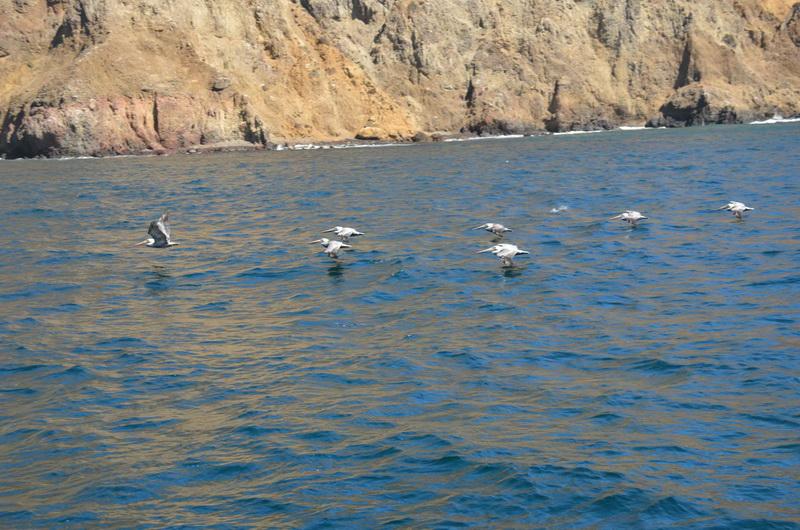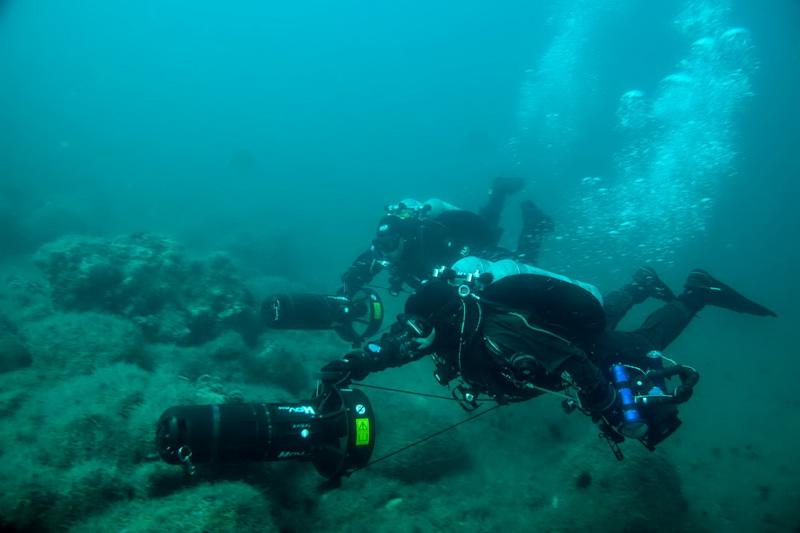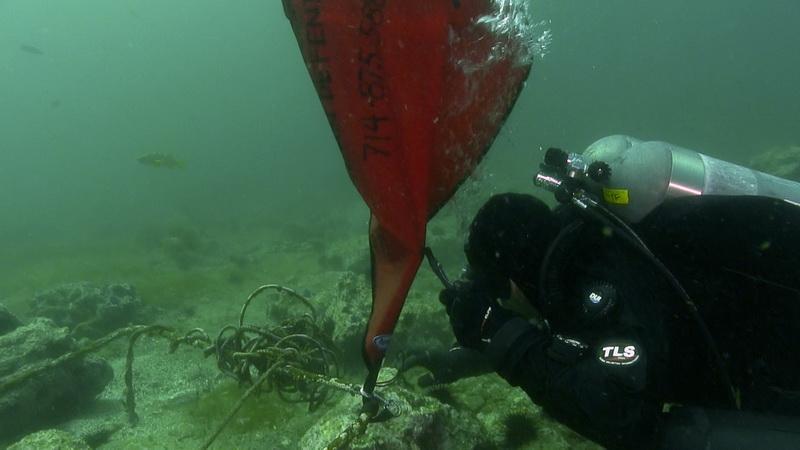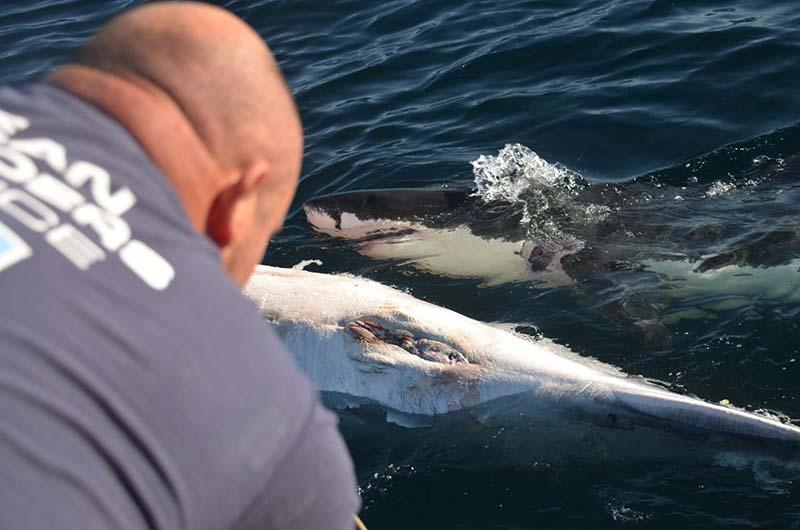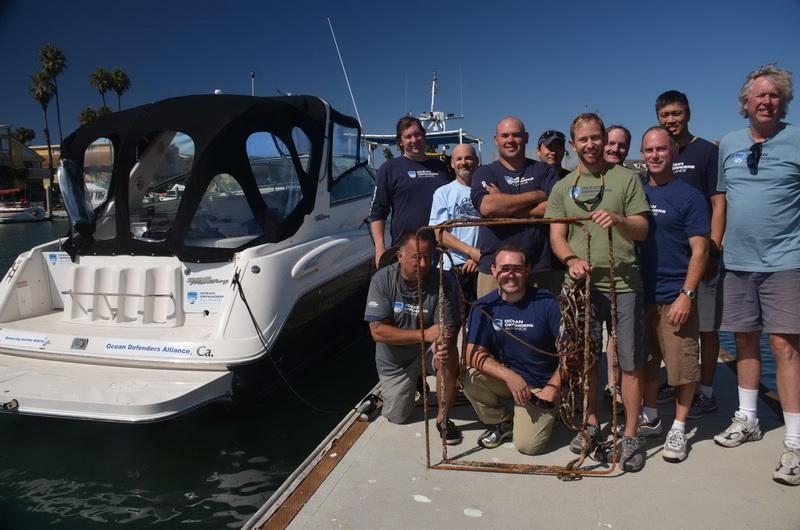by Founder and President Kurt Lieber
We closed out the month of September with a flurry of activity as if preparing our house before the winter storms set in. Busy, busy, busy…

On Sunday, September 22nd, we took both the Clearwater and the Miss T out to Anacapa Island (one of the Channel Islands off the coast of Ventura County). On the 23rd, I gave a presentation to a group of highly motivated students at the Anderson Clark Magnet High School, in La Crescenta. I was interviewed by a reporter from the Ventura County Star newspaper that same day. Two days later on the 25th, I gave another presentation to a very active dive club in Thousand Oaks called the Channel Islands Dive Club. Then on Saturday, September 30th, we took some divers out to Santa Cruz Island (another one of the Channel Islands). To top it off, I gave a short presentation to the Friends of the Ventura River, on Monday, October 1st.
Phew! I was exhausted but excited by all the connections and friends made.
All of this is happening because we are expanding our range and capabilities by removing debris from the northern Channel Islands, all of which have been designated as National Marine Sanctuaries (NMS). While we get our feet wet (pun intended!) and become familiar with these islands, we are developing relationships with a lot of the local people, ocean-related nonprofits, park rangers, enforcement officers, and the Channel Island Harbor Patrol. These folks have been very enthusiastic, and have gone out of their way to help us in our quest to rid the islands of all the abandoned fishing gear that has accumulated over the years and continues to kill marine life.
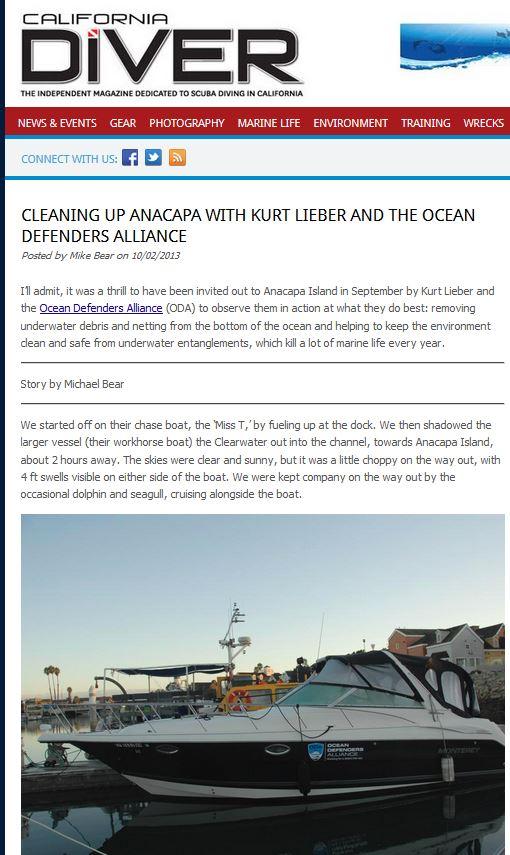
On the 22nd, we were honored to have Mike Bear and David Hershman from California Diver magazine come out with us. Mike wrote a very nice piece on us, while David took some great topside shots. There is a link to the article at the bottom of this page.
Jim Lieber and Mike Jessen were doing the heavy lifting by working the deck. The divers were Peter Fulks, Trevor Fulks, Shingo Ishida, and Andy The.
Our goal was to dive on a site near Cat Rock. This is a formation that starts in deep water and rises to a pinnacle at roughly 60 feet. I had gotten the coordinates from a local diver, and true to his word, when I ran over the site you could clearly see a sharp spike on our GPS navigation unit. But as Jim and I were getting the Clearwater into position to drop the anchor we could see that the currents were roiling, making it impossible to get the divers into and (most importantly) out of the water. So, we were forced to pass on this site and move to a more protected area.
Even when I got to the next site, the current was just too strong to put divers in the water, realizing that fins alone would not be strong enough to overcome the force of the current. But because Peter, Trevor, Shingo and Andy are trained in the use of DPV's (u/w scooters) we dropped our anchor and watched them for the next hour and a half as they located debris and sent lift bags to the surface, three in all. The guys also had a great encounter with about eight or nine giant black sea bass.
This was the first time we had the opportunity to use our new boat, the Miss T, and with Rex Levi at the helm, she performed beautifully. She proved to be a great assist vessel, and an excellent platform for shooting images of the Clearwater team in action hauling dangerous debris out of the beautiful Pacific Ocean.
Connecting with Kids
The next day, Monday, I was greeted by about 30 students at the Clark Magnet School. I had been invited by Dominique Evans to talk with her students about ODA's projects. She is one unique and wonderful teacher, I gotta tell you! She teaches marine biology, and with the help of her students, wrote proposals for two grants—and was successful in garnering funding from both! One got them an ROV (remotely operated vehicle) and the other got them a side scan sonar unit. I am SO ENVIOUS! This is technology that would really help us in locating underwater debris. She did this with high school kids! Looks like I've gotta go back to school…
Dominique and her students have happily signed-on to come out with ODA and help us locate and mark the locations of any debris we might find. We tried to go out on October 5th, but the Santa Ana winds were blowing fierce that day and we had to cancel. We are setting up another date for later this month.
"Diving in" with Divers on Land
Two days later, Wednesday, found me giving another video presentation to the Channel Island Dive Club in Thousand Oaks. Thank you Mike Schecter for inviting me! This was my first time talking with them and it was great to discuss Operation Deep Sweep with folks who are intimately involved with these islands. Eight energetic souls signed-up to volunteer on our all-volunteer ODA Dive and Boat Crew.
Another Day, Another Island
Sunday, the 29th, found us on our first trip to Santa Cruz Island. This island is a marvel of nature. Beautiful kelp beds surround most of the island. Hundreds of pelicans swooped by us-it was quite a sight to behold.
Shortly after that, we watched a herd of something like 200 sea lions zoom past us-with dozens of them leaping out of the water like dolphins—as if they were stampeding towards some unknown dinner bell. In short, the place is alive with wildlife!
We motored up to a site on the northeast side of the island that looked calm and had lots of kelp floating lazily on the water's surface; no current here. We dropped anchor right next to a rocky outcropping that had cormorants and pelicans on it, sunning themselves. The divers (Chris Bell, Maya Fulks, Peter Fulks, and Trevor Fulks) donned their suits and headed down into what turned out to be a magical kelp garden. Jim Lieber, Lisa Davis, and I stayed topside enjoying the wonderful sights and sounds all around us.
As soon as they entered the kelp bed, they were joined by several harbor seals who kept the divers company for their entire dive. Jim couldn't miss out on the fun, so he jumped in and snorkeled all around the area, and he also had a harbor seal escort. These are really inquisitive and playful animals, several times during the dive they were tugging on the divers' fins and snorkels. These animals play an essential role in keeping the underwater habitat healthy by eating the sick, old, and injured fish.
The kelp canopy provided a great habitat for all kinds of fish and other critters: sheephead fish, lobsters, colorful gorgonians, treefish, and several species of rockfish (including the quillback rockfish).
The divers found an abandoned trap as well as roughly 200 feet of polyline, and sent it to the surface. Jim took the Zodiac out and hauled it all back to the Clearwater. After that, the divers rejoined us, we hauled up the anchor, and headed back to port.
We had absolutely ideal seas on our trip back to the harbor. Instead of the usual 4-6 foot waves were have become accustomed to, there were no waves at all. Optimal conditions for spotting whales, if they are in the vicinity. I told everyone to be on the lookout. Well…we got a surprise when we were about half way back to port. There was a whale carcass floating high in the water, and we saw a great white shark feeding on it. [Later, while watching our underwater video footage, I saw that there were actually two sharks].
Peter and Trevor were clever enough to get their 30-pound underwater camera mounted on a pole and get some footage. The LA Times ran a story about it two days later including our footage.
It was quite a whirlwind two weeks. We've gotten lots of new supporters and volunteers. With theirs and your support, we will continue to expand our range and stay active with Operation Deep Sweep for as long as the weather holds out for us.
Please "stand with us on the deck" from wherever you are(!), by making a donation today.
Click here for the California Diver article.
Visit this page to read my earlier article about the great white sharks.
Click on any picture below to start a slide show with larger images.







